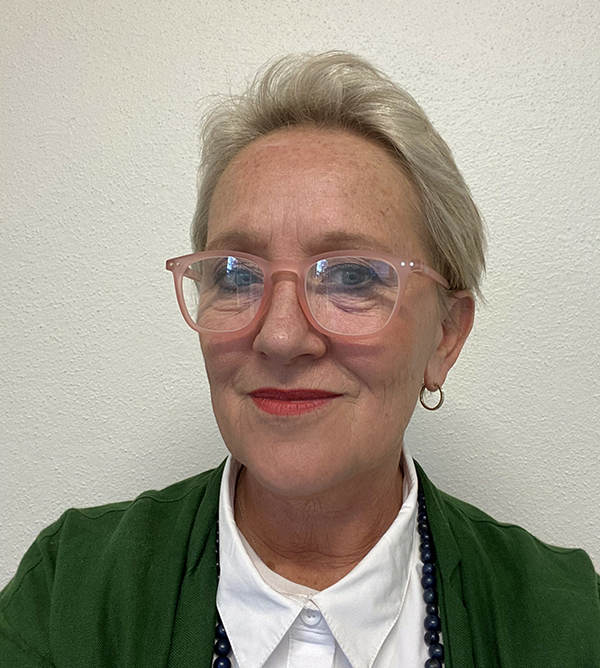
Why is strategy valuable: leaders have their say
Leaders in the community legal sector share their perspectives on strategy – why it is valuable, what has worked and their top tips for developing strategy.

- Insights from the four leaders in the community legal sector in Victoria explore what drove them to develop a strategy and what the strategy helps them to do. It also explores the role that a sector wide strategy can play.
- They also share how to bring stakeholders along on the journey as well as what is needed to implement strategy effectively.
- Finally, they share the following five tips for developing strategy: have patience; look outwards; words matter, get support and communicate.
Leaders of four organisations operating in the Victorian community legal sector share their experiences and top tips on developing strategy. The organisations are diverse in the communities they serve, their size and their activities. But what is common in their experience is the value they have gained from having a strategy in place which supports them to focus, make good decisions and weave a compelling narrative about who they are.
What drives strategy development?
The need to develop strategy – for an organisation, a program, a community, or a sector – can be driven by a variety of factors. There may be a change in the environment which needs to be responded to or a new ‘market’ or opportunity to explore. There may be a need to promote alignment between stakeholders or a need to communicate more clearly. Or there may be a change in funding or a challenge with sustainability. More than likely, it will be combination of a number of these factors and others.
The four leaders who share their insights are from the community legal sector. Community legal centres are independent, community focused organisations which provide free legal services and related wrap around services to people and communities experiencing disadvantage. In Victoria in 2023, community legal centres provided more than 120,000 legal services to Victorians, and there were more than 1.5 million downloads of online tools that they had developed.1
When Annie Nash started in her role as CEO at Villamanta Disability Rights Legal Service (Villamanta), a specialist community legal centre which works alongside people with a disability to navigate legal problems, she recognised that there was a lack of clarity internally about who Villamanta was and who it supports. And there was an additional, and pressing, challenge of ongoing financial sustainability.
Nash describes that “We needed to explore a lot of questions like who we are, what do we do well, which clients need our support, what can we do better? Without that we couldn’t plan our services and we couldn’t be clear with our external stakeholders. We needed to feel like we were rowing in the same direction.”


Djirra, an Aboriginal Community Controlled organisation which provides holistic, self-determined and culturally safe specialist family violence services to Aboriginal women, had a different driver for developing a new strategy. Djirra had grown significantly and there was a need to translate its bold vision into an achievable plan and become better at telling its story.
Antoinette Gentile, Deputy CEO of Djirra, explains: “The bigger you get, the more expectations there are from community and from government to deliver. You have to get more sophisticated about how you tell your story. And while we’re not a business in a profit-making sense, we deliver critical services to Aboriginal women and our women deserve the best. This is us pulling ourselves together to provide the best.”
Justice Connect designs and delivers high impact interventions to increase access to legal support and progress social justice. It has developed its organisational strategy and four program level strategies. In his second year as CEO in 2019, Chris Povey started with the organisational strategy. His priority was to ensure that the various programs of Justice Connect were focussed on what was going to achieve the greatest impact.
He explains that “[W]hen you do lots of different things, you get lots of different opportunities and can get pulled in lots of different directions. We wanted to make sure that we had guidance and clarity across the organisation. We wanted to see the link between the teams and the organisation and between the teams themselves. It was about focus.”

Taking a sector lens, the Federation of Community Legal Centres (the ‘Federation’), the peak body for 47 community legal centres in Victoria, stewarded the development of the community legal sector’s first 10 year plan.
Louisa Gibbs, CEO, describes why they embarked on this ambitious project: “We were heading towards our 50th anniversary as a sector and we reflected on how the landscape had changed in that time. Thinking about this changing landscape, we wanted to know – What is important for us over the next decade? What direction do we want to head in? How can we use our collective strength in a co-ordinated way?”

What does strategy help you to do?
A clear, well-articulated and thoughtful strategy is a key tool for helping an organisation (or a program, community or sector) to make decisions. It is the documented view of what is important and where the focus of efforts and resources needs to be. But there are also other benefits – including from the strategy development process itself.
[W]e’re all now singing from the same song book… And that has been really powerful.”
At its most fundamental, strategy guides decision-making. Povey from Justice Connect reflects that their strategy helps them make good, evidence-based decisions as they are clear on what they do and what they don’t do. It helps them to focus when they have a myriad of opportunities they could potentially be exploring.
Nash from Villamanta shares a similar reflection about making decisions. She explains that she was quickly able to decline a potential opportunity proposed to Villamanta, as it did not logically align with the new strategy that had been recently endorsed by Villamanta’s Committee of Management.
A good strategy also tells a compelling story of who the organisation is and where it is headed. Nash describes that “[W]e’re all now singing from the same song book, drawing from the same narrative. And that has been really powerful”.
For Villamanta, it is critical that the narrative is expressed in a way that is accessible to everyone. Its final strategy includes an easy-to-understand version for a key audience of Villamanta, people with cognitive impairment.
Telling the story is not only empowering for staff, management and the Board, but it also supports conversations with funders. Antoinette Gentile from Djirra describes that their strategy gives them confidence to tell their story when they walk into funder conversations. She notes that Djirra has had several key funding wins since their strategy has been in place.
And whilst it is not usually the primary driver for embarking on a strategy development project, the process itself can help to bring teams together, improve the organisational culture and build capability.
The Federation’s Gibbs reflects that the development of the 10-year plan motivated people and built trust within the sector: “We are so diverse – community legal centres with small and large staffing profiles, some with a distinct area of law and some that span vast areas of Victoria. It’s helped us recognise amongst ourselves our strengths as individual organisations and as a sector.”
It can also pave the way for more difficult organisational conversations. Nash describes that it was only once the strategy was in place that she felt like the management team could tackle broader challenges such as the emotional health of the organisation: “The strategy process that we went through provided the ‘bones and structure’ that we are working from. People felt safe and secure from how they were engaged in the strategy development process. We couldn’t have had these conversations before we developed the strategy.”
We put a lot of time and effort into getting this clarity and we can use that in the future.”
Lastly, but importantly, Povey also identifies a longer-term benefit for Justice Connect. Investment over several years in developing strategy – across the organisation and in its programs – has built in Justice Connect what he describes as its “strategic infrastructure”. This is a set of interconnected and mutually-reinforcing pieces of work that comprise the organisational strategy, each program strategy, a set of refreshed values and a measurement and evaluation framework. This forms the foundations of the organisation and has an ongoing value in any future strategy process.
Povey explains “We put a lot of time and effort into getting this clarity and we can use that in the future. You don’t want to be constantly starting from zero every time you need to refresh your strategy.”
What is the role of a sector-wide strategy?
Social sector leaders will be very familiar with organisational and program-level strategies, but may have had less exposure to a sector-wide strategy and the role it can play.
Gibbs considers that a sector-wide strategy can be an enabler across a sector. For the community legal sector’s 10 year plan, it has been “a constant that the sector can come back to. It helps us decide what to focus on in our sector-wide meetings. It helps us make decisions as a whole as we can ask ourselves – is this opportunity going to help our collective plan for where we want the sector to be?”
It also supports how the sector tells the story of its value and its impact. This is particularly helpful for conversations with funders as there is a clarity about what the sector is aiming to achieve.
Like all strategies, Povey reflects that its value will depend on how the sector uses it, “if it’s a living and breathing thing”.
… having a shared approach across the sector will ultimately produce better outcomes for clients.”
Nash has already seen the benefits. She sees the sector all striving, individually, with getting the right data, evaluating programs and understanding the outcomes that are being created for communities, and reflects on how that is “incredibly onerous if you are doing that centre by centre”.
As Villamanta developed its strategy, she noted the importance of having shared aspirations already agreed across the sector, as it provided a framework to start from. She believes that having a shared approach across the sector will ultimately produce better outcomes for clients.
How can you bring stakeholders along on the journey?
Talking to stakeholders – both internal and external – can be a powerful tool in the strategy toolkit. It allows you to learn and see different perspectives; it allows you to communicate and educate; it allows you to promote ownership and accountability. But, to engage with stakeholders in a strategy process requires time and investment and should be fit-for-purpose for the context and the specific stakeholder group. [See [Strategy: to consult, inform or simply wing it.]]
You need to create ownership for everyone. We all have a part to play in this strategic plan.”
How deeply, and when, to engage with staff is a common issue that organisations grapple with. Djirra knew from the outset that it would be critical for its strategy work and decided to hold a three day in-person workshop for the whole senior team. Gentile explains her perspective, “You need to create ownership for everyone. We all have a part to play in this strategic plan. And this is how we are going to have success. People need to feel they are listened to and that their experience and expertise in their particular area has been taken up.”
Povey from Justice Connect, agrees. He reflected on the challenges of running a strategy process during COVID and opportunities to better engage the team in this new direction. Once the program-level strategy pieces were in place, aligned neatly with the organisational strategy, the broader team felt more empowered to engage with and support the strategy.
If you don’t create the spaces, you’re not going to hear all the voices.”
Engaging with end-beneficiaries can also be critical. For Djirra, this was a key stakeholder group. Gentile says “We know we can speak with confidence for what we are asking for because it comes directly from our women. So we now know that this is what our women want and need.”
Gibbs from the Federation shares the same view. In the deep consultations carried out in the lead up to the 10 year plan development, the Federation provided many and varied ways for stakeholders to provide input. The process also deliberately included people in the community with a legal need. She explains “If you don’t create the spaces, you’re not going to hear all the voices”.
Most strategy projects require engagement with the Board (or, for some non-profits, their governing body called the Committee of Management) at some level, particularly for an organisational strategy where the Board/Committee of Management needs to approve the final strategy. But the depth of engagement, and how it is done, needs to be fit for purpose for the specific context.
For Villamanta, it was always planned that the Committee of Management would be involved in strategy development. But the mode and depth of engagement had to change part way through the project when it became clear that more effort was needed to get alignment between the Committee of Management and the leadership team. A smaller working group of the Committee of Management was formed to work more closely and intensively on key elements of the strategy development. CEO Nash describes this as a pivotal moment as it was the key in progressing and finalising a strategy for which everyone felt ownership and pride.
Djirra found that an added benefit of Board involvement was that it helped communicate the business-as-usual work that Djirra undertakes and built an aligned understanding of the “big ticket items we want to get to”.
What is needed to effectively implement strategy?
But developing the strategy is just the starting point. Its success will depend on how it is used and implemented. And the challenges of implementation are, in SVA’s experience, often underestimated.
The Federation’s Gibbs talks about the importance of keeping up the momentum of implementation. It requires adequate time, resources and energy. This is particularly heightened in the context of a sector-wide strategy which spans a 10-year time horizon and requires action and input from stakeholders across the sector. This led to a decision to allocate resources to develop up a comprehensive implementation plan together with a measurement and reporting framework to ensure that the sector could track – and communicate – its progress against the strategy.
It is also common to identify aspects of the strategy that, in hindsight, need more work. Povey reflects that the Justice Connect strategy was created at a time when key data systems including a new customer relationship management system were not yet in place, and this made it challenging to pinpoint the shifts the team was looking for in the new strategy.
From SVA’s experience, setting targets or key performance indicators can often be challenging in the social sector, particularly versus a for-profit context. It relies on deep thinking about outcomes and impact, and having data to both set the baseline and to track progress against it.
Top tips for developing strategy
The four organisations share the following five top tips on developing strategy. These words of wisdom are relevant to any social sector program, organisation, community or sector about to embark on strategy development.
- Have patience. Povey advises that it is important to take the time to land a strategy. Unless you are starting the process with all of the fundamentals already in place (which is a reasonably rare circumstance in the social sector), there are aspects of the strategy that will take more time to land than you expect. Povey balances this by advising that there does need to be an end-point: “because one thing that everyone hates is a strategy process that never ends”.
- Look outwards. Nash says it is critical to look beyond your own organisation – “Talk to your peak body, your funders and your partners as you will not have all the answers yourself.” And she suggests not being afraid of involving the people most impacted by your work – your clients, your end-beneficiaries – “because that’s where you will get the richest perspectives”.
- Words matter. How you express and articulate the strategy is important as it needs to resonate with the people, communities and stakeholders who will be reading it. Gentile explains “We were really strong about emphasising the strengths of our women and drawing on their resilience and strength. Our plan talks in a way that resonates with our community, our staff. It’s not jargon. It’s Aboriginal women and their voices.”
- Get support. Having an external perspective to guide strategic thinking, and drive the process, can help to land a strategy effectively. Nash describes external support as an investment in the organisation’s future. Povey says that you need “people who are going to walk alongside you and can help you catalyse all the learning and thinking and move the process along”.
- Communicate. Communicate often and early with your staff, your Board and other key interested stakeholders. One aspect of this is about the process of strategy development. Gibbs recommends to “be really clear along the way about what you’re doing, why you’re doing it, what it means for them [the stakeholders] and where there is the opportunity to contribute”. But it is also important to share where the strategy is landing, and why. This is critical for ensuring there is buy-in for the strategy at all levels.
The four organisations interviewed for this article (Djirra, Federation of Community Legal Centres, Justice Connect and Villamanta Disability Rights Legal Service) are clients of SVA Consulting.
- Statistics are for 36 of Victoria’s 47 community legal centres that collect consistent data fields. Actual figures are higher. Federation of Community Legal Centres Victoria Inc, Annual Report 2022–2023, pp.26-27.






